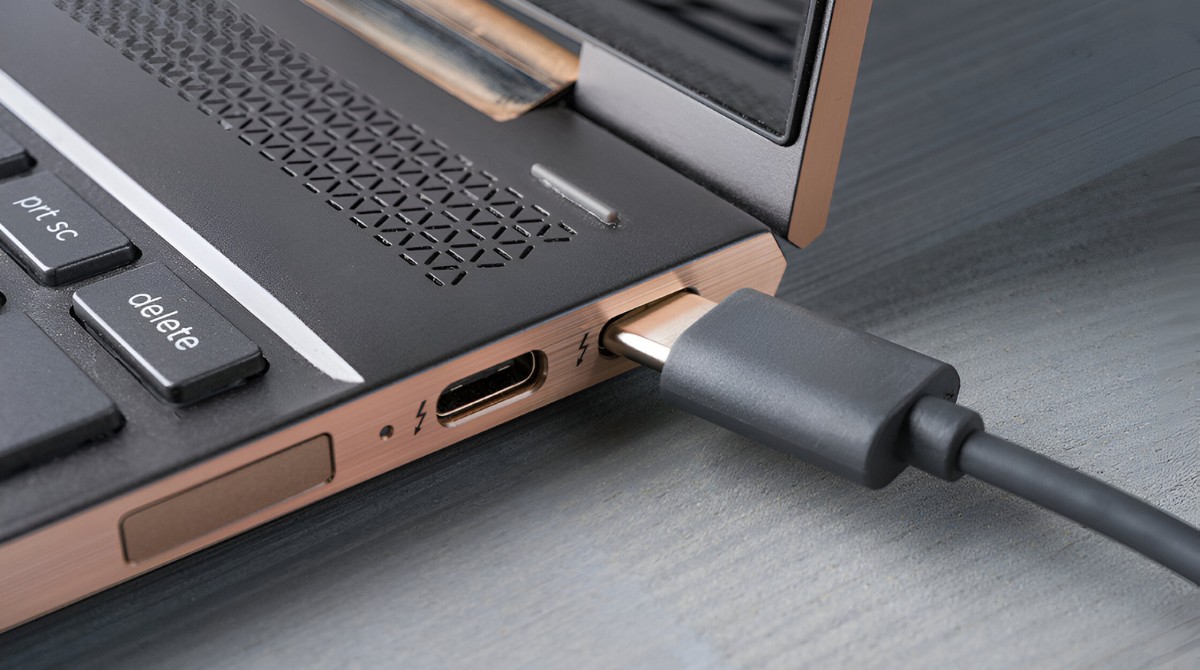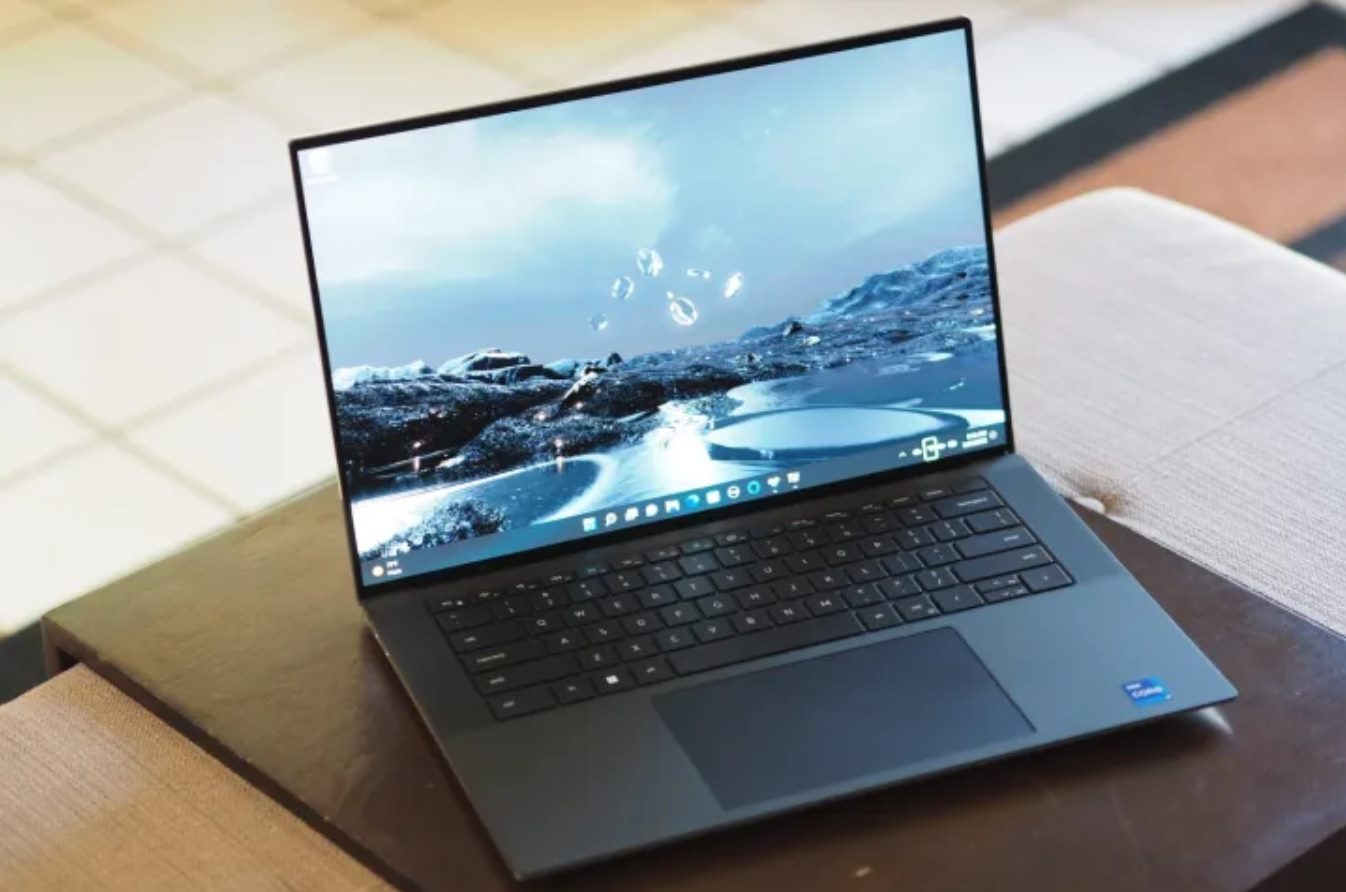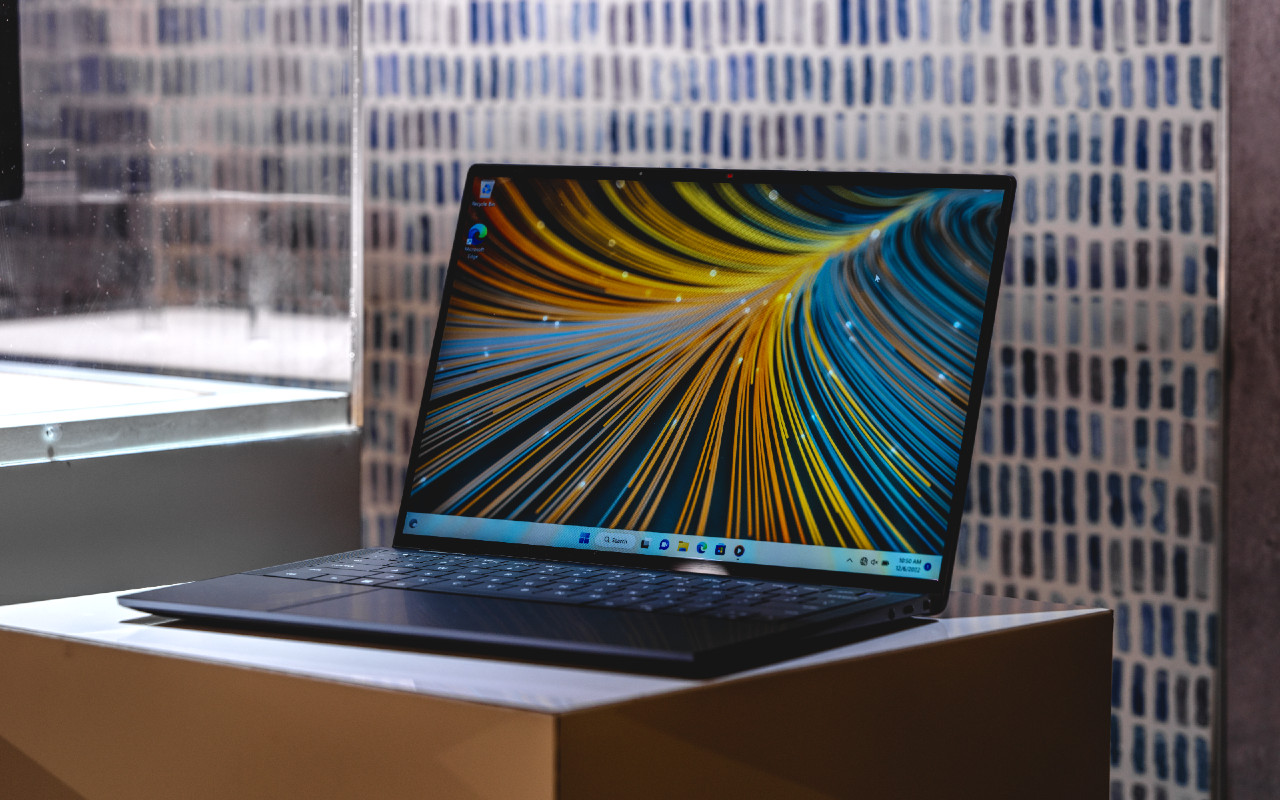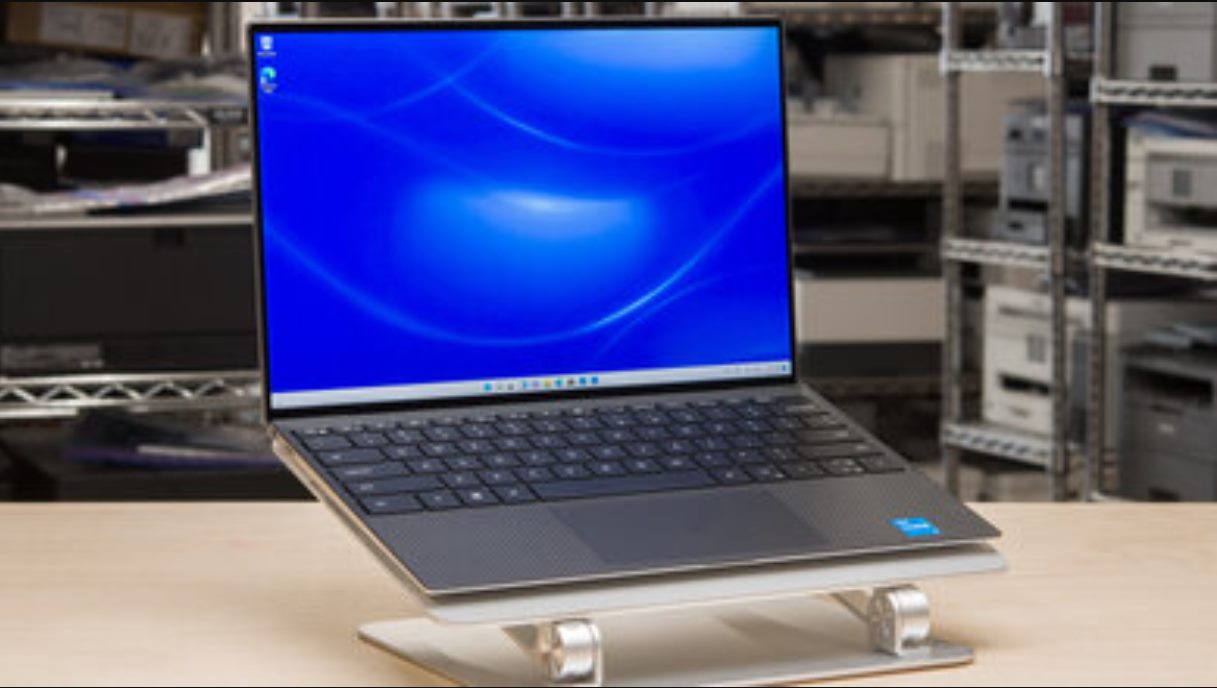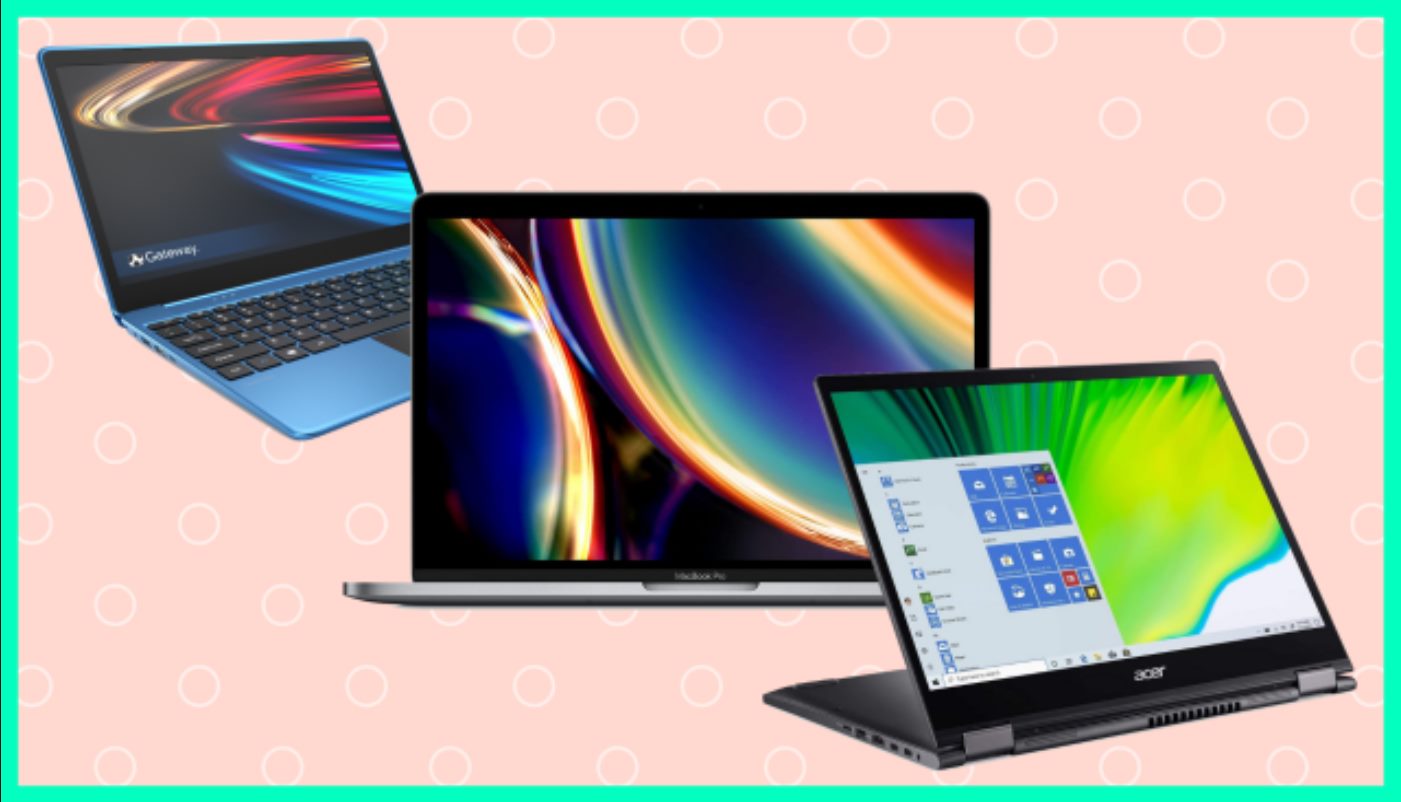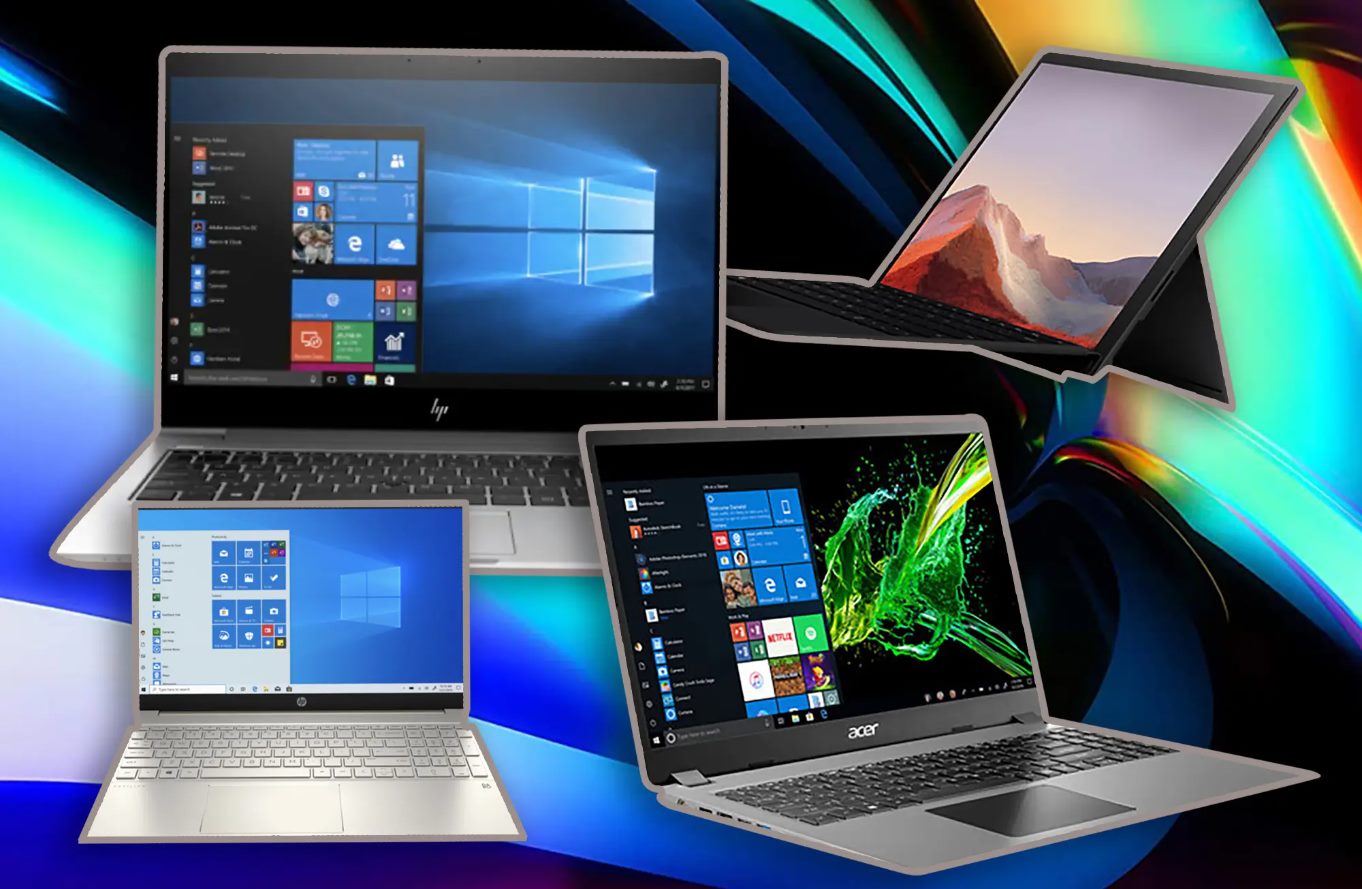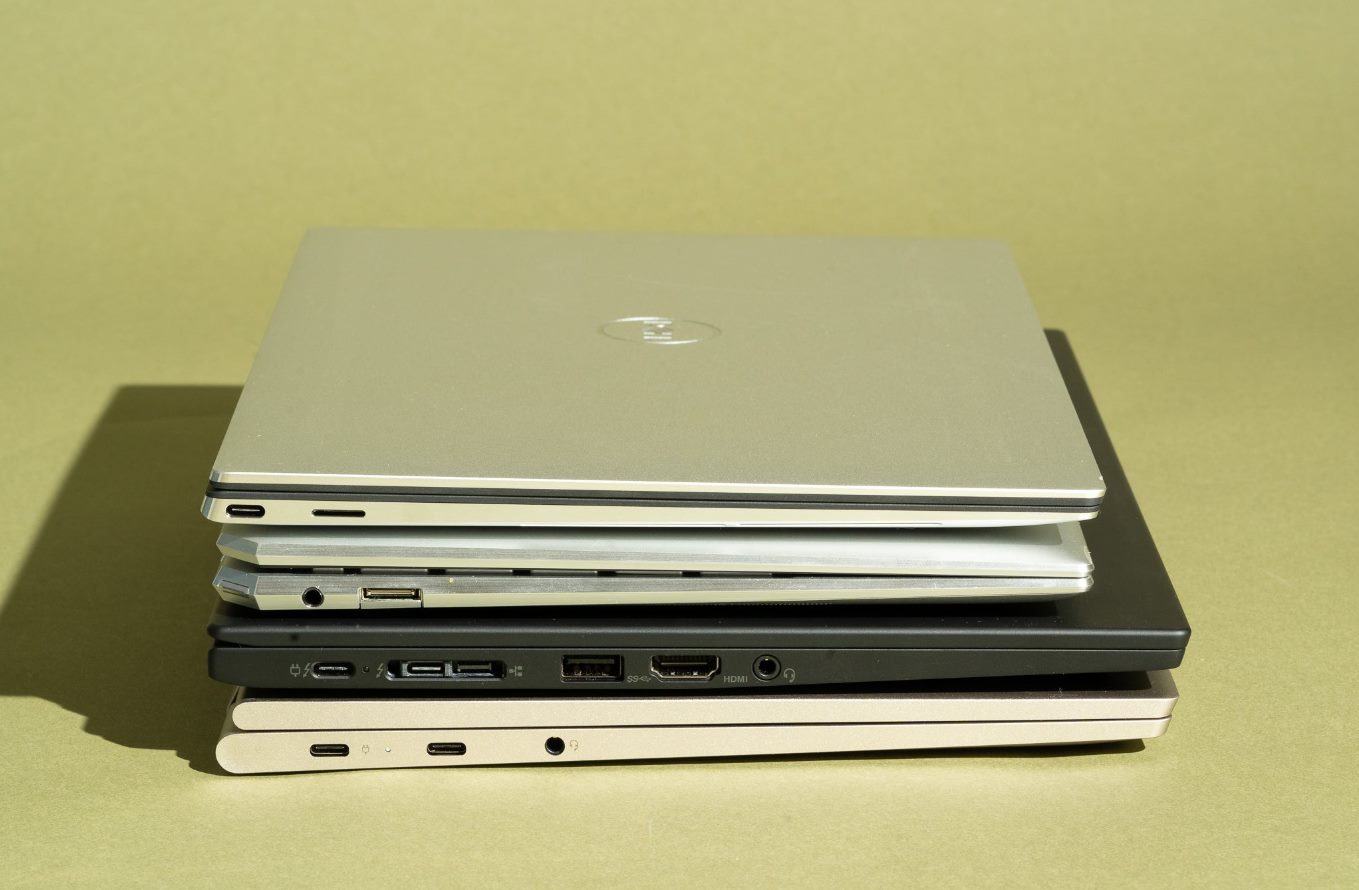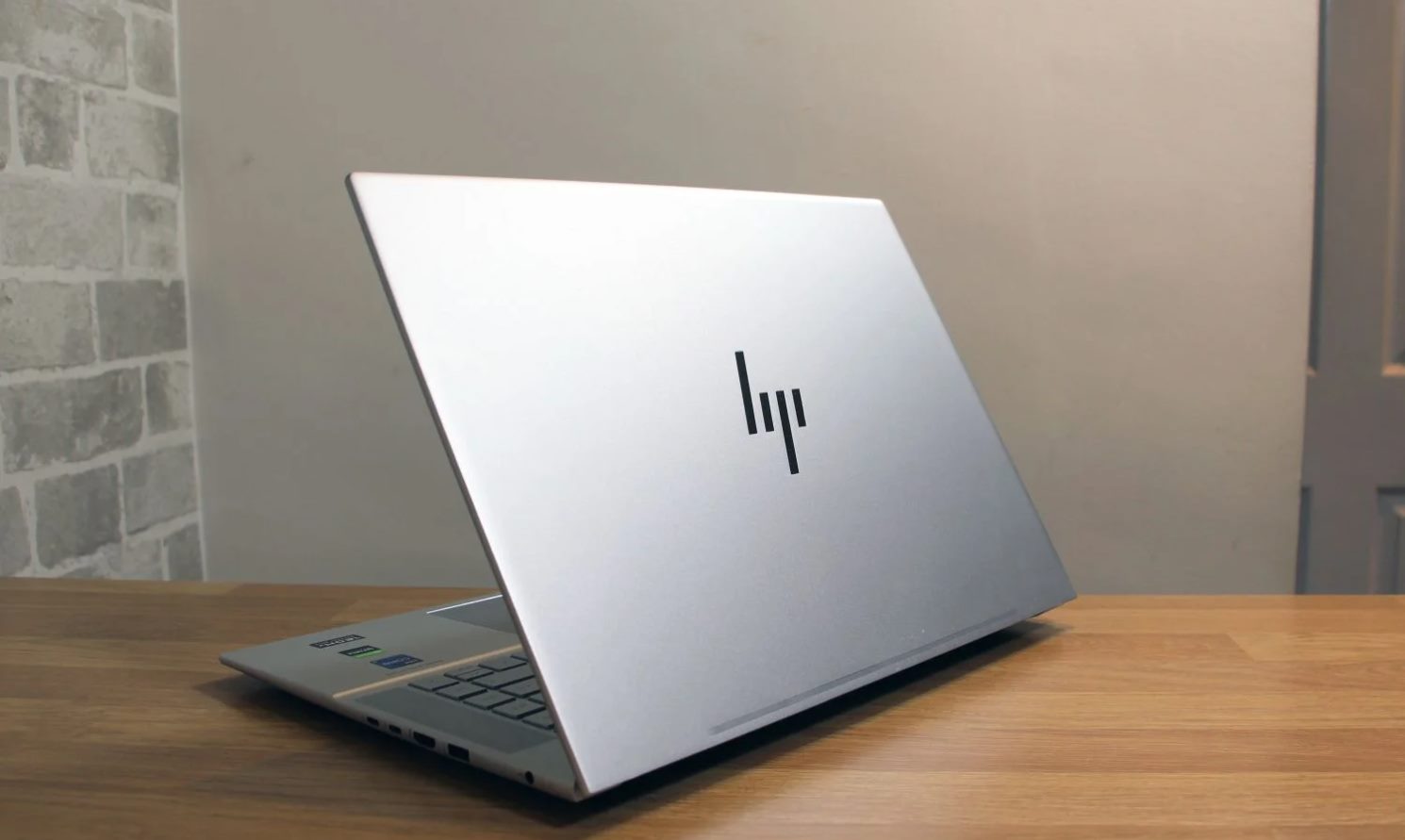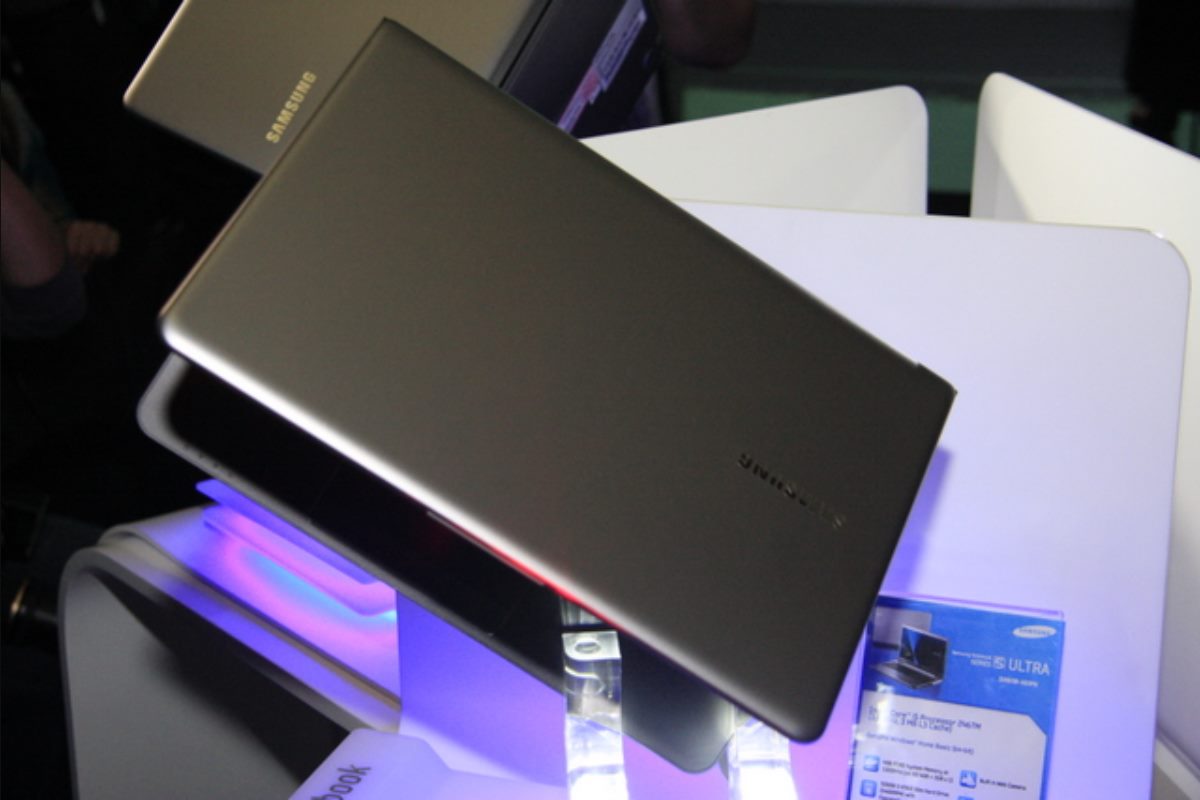Introduction
Welcome to the world of ultrabooks! These sleek and lightweight devices have become increasingly popular due to their portability and high performance capabilities. If you own an ultrabook, you know how important it is to keep it charged and ready to go. But with so many different battery chargers available, it can be confusing to know which one is the right fit for your specific ultrabook.
The key to finding the perfect battery charger for your ultrabook lies in understanding its power requirements, compatibility, and other important factors. In this article, we will guide you through the process of determining what battery charger your ultrabook needs. Whether you have lost your original charger, need a replacement, or simply want a backup charger, we will help you make an informed decision.
By the end of this article, you will have a clear understanding of the various charging technologies, how to identify the charging connector on your ultrabook, and factors to consider when choosing between a wall charger or a USB charger. We will also discuss the importance of voltage and amperage considerations, as well as safety features and special features to look out for in a battery charger.
So, let’s dive into the world of ultrabook battery chargers and ensure that you have all the information you need to keep your ultrabook running smoothly and efficiently.
Understanding the Power Requirements of Your Ultrabook
Before you can choose the right battery charger for your ultrabook, it’s crucial to understand its power requirements. Every ultrabook has specific power needs, and using an incompatible charger can cause damage to both the charger and the ultrabook itself.
The first step in understanding your ultrabook’s power requirements is to check the manufacturer’s specifications. Look for information like the required voltage and amperage. These numbers will help you determine the charger’s power output that is compatible with your ultrabook.
Voltage is the amount of electric potential that flows through the charger and into your ultrabook. The voltage requirement of your ultrabook can usually be found on the manufacturer’s website or in the user manual. Common voltage requirements for ultrabooks are 19V or 20V.
Amperage, or current, is the amount of electric current that the charger can deliver to your ultrabook. It is essential to choose a charger that can supply the required amperage to ensure efficient charging. If the amperage is too low, the charging process will be slower, and if it’s too high, it could potentially damage the ultrabook’s battery.
In addition to voltage and amperage, consider the wattage of the charger. Wattage is a measure of the charger’s power output, calculated by multiplying the voltage and amperage. A higher wattage charger can deliver power more efficiently and charge the ultrabook faster, but it’s essential to ensure it matches your ultrabook’s requirements.
Another factor to consider is the input voltage range of the charger. Some chargers support a wide input voltage range, making them suitable for international travel or areas with fluctuating voltage levels.
Understanding your ultrabook’s power requirements ensures that you choose a battery charger that can deliver the appropriate voltage, amperage, and wattage. Using the wrong charger can not only result in slower charging but may also pose a risk to the battery and overall performance of your ultrabook.
Charging Technology and Compatibility
When it comes to battery chargers for ultrabooks, there are different charging technologies to consider. Understanding these technologies and their compatibility with your ultrabook is crucial in ensuring efficient charging and preventing any compatibility issues.
One common charging technology is the USB-C Power Delivery (PD) standard. USB-C PD chargers provide fast and efficient charging for ultrabooks, thanks to their higher power output capabilities. USB-C PD chargers can deliver up to 100 watts of power, making them suitable for charging even high-performance ultrabooks.
However, it’s important to ensure that your ultrabook supports USB-C PD charging. Check the manufacturer’s specifications or user manual to confirm if your ultrabook is compatible with USB-C PD chargers. Some older ultrabook models may not have USB-C ports or may not support USB-C PD charging.
If your ultrabook doesn’t support USB-C PD charging, you may need to consider other charging technologies. One option is a charger that uses a proprietary charging connector specific to your ultrabook brand. These chargers are designed to match the power requirements of your ultrabook and ensure compatibility.
Alternatively, there are universal laptop chargers available that come with multiple charging tips. These tips are interchangeable and can be attached to the charger to fit various ultrabook models. Universal chargers are a convenient solution if you have multiple ultrabooks or if you frequently work with different ultrabook brands.
It’s important to note that when using a non-USB-C PD charger, the charging speed may be slower compared to USB-C PD chargers. Additionally, compatibility may vary, so it’s crucial to check the supported ultrabooks and their power requirements before purchasing a charger.
By considering the charging technology and compatibility of different chargers, you can find the right option that aligns with your ultrabook’s power requirements. Whether it’s a USB-C PD charger, a proprietary charger, or a universal charger, ensuring compatibility will guarantee optimal charging performance for your ultrabook.
Identifying the Charging Connector
One of the crucial steps in finding the right battery charger for your ultrabook is identifying the charging connector. The charging connector is the physical interface that connects the charger to your ultrabook for power transfer. Different ultrabook models utilize different charging connectors, so it’s essential to identify the correct one.
The most common types of charging connectors for ultrabooks include USB-C, MagSafe, and barrel connectors. USB-C connectors have become increasingly popular and are found on many modern ultrabooks. They are reversible, meaning you can insert the connector into the port in either orientation. USB-C connectors also support fast charging and data transfer capabilities.
MagSafe connectors were popularized by Apple and used in older MacBook models. They feature a magnetic connection, which allows the connector to detach from the ultrabook easily if accidentally pulled or tugged. This magnetic feature helps prevent damage to the charging port or cable.
Barrel connectors are another common type, characterized by a cylindrical shape with a pin in the center. The diameter and shape of the barrel connector can vary depending on the ultrabook brand and model. Some barrel connectors may have different sizes and polarity, so it’s crucial to identify the correct one based on the ultrabook’s specifications.
To identify your ultrabook’s charging connector, check the manufacturer’s specifications or user manual. You can also visually inspect the charging port on your ultrabook and compare it to available connector types. Pay attention to the shape, size, and any specific features like magnets or pins.
If you are unsure about the charging connector, it is advisable to consult the manufacturer’s customer support or visit their official website for detailed information. They can provide guidance and ensure that you choose the right charger with the compatible charging connector for your ultrabook.
By correctly identifying your ultrabook’s charging connector, you can ensure compatibility with the battery charger you choose. This step is crucial in avoiding any potential damage to the charging port or incorrect connection that may result in inefficient or ineffective charging.
Check Your Ultrabook’s Power Rating
To select the right battery charger for your ultrabook, it’s essential to check the power rating of your device. The power rating includes details such as the wattage or power consumption of your ultrabook, which will help you determine the appropriate charger to use.
You can typically find the power rating information in the manufacturer’s specifications or user manual. Look for details like the maximum power consumption or the wattage required by your ultrabook. This information is crucial in ensuring that the charger you choose can deliver the necessary power to charge your ultrabook efficiently.
When it comes to power rating, it’s important to consider two key factors: the charger’s wattage and its compatibility with your ultrabook’s power rating. The wattage represents the total power output of the charger, and it should ideally match or exceed your ultrabook’s power consumption.
For example, if your ultrabook has a maximum power consumption of 45 watts, it is advisable to choose a charger with a wattage of 45 watts or higher. Using a charger with a lower wattage may result in slower charging or insufficient power supply.
Additionally, consider any specific power requirements or recommendations provided by the ultrabook manufacturer. Some ultrabooks may require a specific wattage or charger model for optimal performance and compatibility. These specifications ensure that your ultrabook receives the correct power supply without causing any damage.
While it is generally safe to use a charger with a higher wattage than your ultrabook’s power rating, using one with significantly higher wattage may not offer any additional advantages. In fact, it may lead to faster battery deterioration or potential charging issues, so it’s best to match the wattage as closely as possible to your ultrabook’s power consumption.
By checking your ultrabook’s power rating and comparing it with the charger’s wattage, you can ensure that you select a charger that meets the power requirements of your ultrabook. This attention to detail will help maximize the charging efficiency and prolong the lifespan of your ultrabook’s battery.
Voltage and Amperage Considerations
When choosing a battery charger for your ultrabook, it is crucial to consider the voltage and amperage requirements. Understanding these specifications ensures that the charger you select provides the appropriate power supply to your ultrabook.
Voltage refers to the electrical potential difference between the charger and your ultrabook. It is essential to match the voltage requirement of the charger to the voltage requirement of your ultrabook. Most ultrabooks require a voltage of 19V or 20V, but it’s important to verify the specific voltage required by your device. Using a charger with a different voltage can potentially damage your ultrabook’s battery or other electronic components.
Amperage, or current, represents the rate at which electrical charges flow from the charger to your ultrabook. It is crucial to select a charger that can supply the required amperage for efficient charging. The amperage requirement can usually be found in the manufacturer’s specifications. Using a charger with a lower amperage than required may result in slower charging, while using a charger with a higher amperage may put unnecessary stress on your ultrabook’s components.
When selecting a charger, ensure that the voltage and amperage ratings on the charger match or are compatible with your ultrabook’s specifications. This information can usually be found on the charger itself or in the product description. If you are unsure, consult the manufacturer’s website or customer support for clarification. It is important to note that using a charger with the wrong voltage or amperage can void your ultrabook’s warranty, so it’s best to adhere to the recommended specifications.
In some cases, chargers may have adjustable voltage or amperage settings. While it may be tempting to adjust the settings to match your ultrabook, it is generally recommended to use the default settings provided by the manufacturer. Making adjustments without proper knowledge can lead to damage or improper charging. If you have any doubts, consult the ultrabook manufacturer or a qualified professional for assistance.
By carefully considering the voltage and amperage requirements, you can select a battery charger that provides the optimal power supply for your ultrabook. This ensures efficient and safe charging, prolonging the lifespan of your ultrabook’s battery and maintaining its overall performance.
Wall Charger or USB Charger?
When it comes to charging your ultrabook, you have the option to choose between a wall charger or a USB charger. Both options have their advantages and considerations, and it’s important to weigh them based on your specific needs and preferences.
A wall charger, also known as a power adapter, is a dedicated charging device that plugs directly into a wall outlet. Wall chargers typically come with the necessary cables and connectors to charge your ultrabook. They are designed to deliver the specific voltage and amperage required by your ultrabook, ensuring efficient charging.
One of the main advantages of wall chargers is their higher power output capabilities. They can often deliver more power than USB chargers, allowing for faster charging times. Wall chargers are also reliable and offer a stable power supply, which can be beneficial for demanding tasks or when your ultrabook is running on high performance.
On the other hand, USB chargers provide a more versatile and convenient charging solution. USB chargers leverage the universal USB ports found on most laptops, including ultrabooks. This means you can charge your ultrabook using USB-A or USB-C ports, which are common on various devices.
USB chargers have the advantage of being more portable and compatible with a wider array of devices. This makes them ideal for travelers or individuals who frequently switch between different devices and charge on the go. USB chargers are also more compact and less cumbersome compared to wall chargers, making them easier to carry in your bag or pocket.
However, it’s important to note that USB chargers may have lower power output compared to wall chargers. This can result in slower charging times, especially for power-hungry ultrabooks or when performing resource-intensive tasks while charging. Additionally, not all USB ports may supply sufficient power for charging an ultrabook. It’s essential to check the USB port’s power output and compatibility with your ultrabook’s charging requirements.
In summary, if you prioritize faster charging and a consistent power supply, a wall charger is recommended. It offers higher power output capabilities and is ideal for situations where you need to charge your ultrabook efficiently. On the other hand, if portability and versatility are important to you, a USB charger may be the better choice. It provides the convenience of charging through USB ports and is compatible with a wide range of devices.
Consider your specific needs and the intended usage of your ultrabook to determine whether a wall charger or USB charger suits you best. Both options have their advantages, and selecting the right charger will ensure that your ultrabook stays charged and ready whenever you need it.
Portable or Stationary Charger
When choosing a battery charger for your ultrabook, you have the option to decide between a portable or stationary charger. Each type has its own advantages and considerations, and understanding their differences will help you make the right choice based on your needs and usage preferences.
Portable chargers, also known as travel chargers or power banks, are designed for on-the-go charging. These chargers are compact and lightweight, making them easy to carry in your bag or pocket. They typically have built-in batteries that can be charged beforehand and used to recharge your ultrabook when you’re away from a power outlet.
One of the main advantages of portable chargers is their convenience and portability. They allow you to charge your ultrabook wherever you are, whether you’re traveling, working in a coffee shop, or attending meetings. Portable chargers are especially useful when you don’t have access to a power outlet for an extended period.
It’s important to consider the capacity of the portable charger when making a decision. The capacity is measured in milliampere-hours (mAh) and determines how much power the charger can store. Higher capacity portable chargers can provide multiple charges or longer usage time for your ultrabook before they need to be recharged themselves.
On the other hand, stationary chargers are designed to be used in a fixed location, such as your home or office. These chargers are not as portable as their portable counterparts, but they offer advantages in terms of power output and charging speed. Stationary chargers often have higher wattage and can deliver more power to charge your ultrabook quickly and efficiently.
If you primarily use your ultrabook in a fixed location, a stationary charger may be the better option. It provides a reliable and stable power supply, ensuring efficient charging and allowing you to use your ultrabook at full performance without worrying about battery drain.
Consider your needs and usage patterns to determine whether a portable or stationary charger suits you best. If you are frequently on the move or in situations where access to a power outlet is limited, a portable charger is a practical choice. However, if you mainly use your ultrabook in a specific location and require fast and reliable charging, a stationary charger may be more suitable.
In some cases, you may even consider having both a portable charger for on-the-go charging and a stationary charger for home or office use. This way, you have the flexibility to charge your ultrabook wherever you are, ensuring you never run out of power.
By considering the portability and power needs of your ultrabook, you can choose between a portable or stationary charger that aligns with your lifestyle and usage requirements. Whether you prioritize convenience or high-power output, there is a charger option available to meet your needs.
Safety Features to Look For
When selecting a battery charger for your ultrabook, it’s important to prioritize safety. Charging your ultrabook with an unsafe or low-quality charger can not only damage your device but also pose a risk to your personal safety. To ensure a reliable charging experience, it’s essential to look for chargers that come with important safety features. Here are some key safety features to consider:
1. Overheat Protection: A charger with overheat protection will automatically shut off or reduce its power output if it detects excessive heat. This feature helps prevent the charger from overheating and potentially causing damage to your ultrabook or posing a fire hazard.
2. Overcurrent Protection: Overcurrent protection prevents the charger from delivering an excessive amount of current to your ultrabook. It safeguards against the risk of damaging the device’s components or overloading the battery, ensuring safe and efficient charging.
3. Short Circuit Protection: Short circuit protection is essential to prevent damage to your ultrabook in case of a short circuit. It instantly cuts off the power supply when it detects a short circuit, thereby minimizing the risk of a power surge or other electrical hazards.
4. Surge Protection: Chargers with surge protection guard against voltage spikes or power surges that can potentially damage your ultrabook’s sensitive components. Surge protection ensures a stable and safe power supply to protect your device from sudden electrical fluctuations.
5. Overvoltage Protection: Overvoltage protection safeguards your ultrabook against excessive voltage levels, which can damage the device’s charging circuitry or other internal components. It ensures that the charger delivers a safe and regulated voltage to prevent any potential harm.
6. Certification: Look for chargers that have been certified by reputable organizations, such as UL (Underwriters Laboratories), FCC (Federal Communications Commission), or CE (Conformité Européene). Certification ensures that the charger has undergone rigorous testing and meets safety standards, providing you with peace of mind.
7. Quality Design and Materials: Choose chargers that are made from high-quality materials and have a solid build quality. Chargers with durable construction are less likely to fail or cause safety issues during the charging process.
When considering a battery charger, always opt for reputable brands or trusted manufacturers. Read customer reviews and seek recommendations from reliable sources to ensure the charger you choose has a track record of safety and performance.
By prioritizing safety features in your charger selection, you can safeguard your ultrabook from potential damage and mitigate the risk of electrical hazards. Remember to never compromise on safety when it comes to charging your ultrabook, as it protects both your device and yourself from potential harm.
Special Features to Consider
When choosing a battery charger for your ultrabook, there are some special features that you may want to consider. While not essential for basic charging functionality, these features can enhance your charging experience and provide added convenience. Here are some special features to keep in mind:
1. Fast Charging: Fast charging technology allows your ultrabook to charge at a much faster rate compared to standard charging. This feature can be especially useful when you’re in a hurry or need a quick boost of power. Look for chargers that support fast charging protocols like USB Power Delivery (PD) or Qualcomm Quick Charge if your ultrabook is compatible.
2. Multiple Ports: Having a charger with multiple ports can be convenient if you need to charge multiple devices simultaneously. For example, you can charge your ultrabook and smartphone at the same time using a single charger, reducing the number of chargers you need to carry.
3. Wireless Charging: Wireless charging technology eliminates the need for cables, allowing you to charge your ultrabook wirelessly by simply placing it on a compatible charging pad. This feature can provide a clutter-free charging experience and is ideal for those who prefer a cable-free environment.
4. LED Indicators: LED indicators on the charger can provide useful information about the charging status, such as whether the charger is connected, the charging progress, or when the charging is complete. This feature allows you to quickly check the status of your ultrabook’s battery without having to power it on.
5. Portability: While portability is generally associated with portable chargers, some stationary chargers also offer compact designs that make them easy to carry or move around. If you plan to use your ultrabook in multiple locations or travel frequently, consider a charger that is lightweight and compact for added convenience.
6. Cable Management: Chargers that come with built-in cable management features can help keep your charging setup organized and tangle-free. Look for chargers with cable clips or compartments to neatly store the charging cables when not in use.
7. Smart Charging Technology: Some chargers come with smart charging technology that identifies the device connected to it and adjusts the power output accordingly. This feature can optimize charging efficiency and protect your ultrabook’s battery by preventing overcharging or delivering excess power.
Consider your specific needs and preferences when selecting a charger with special features. Not all features may be necessary or relevant for your usage scenario, so prioritize the ones that align with your requirements to enhance your charging experience and make it more convenient.
Remember to balance these special features with other essential factors like safety, compatibility, and power requirements to ensure you choose a charger that meets all your needs and provides a reliable charging solution for your ultrabook.
Conclusion
Selecting the right battery charger for your ultrabook is crucial to ensure efficient and safe charging. By understanding your ultrabook’s power requirements, identifying the charging connector, and considering factors like voltage, amperage, and wattage, you can choose a charger that meets your ultrabook’s needs.
When deciding between a wall charger or a USB charger, consider factors like power output, portability, and convenience. Portable chargers provide flexibility for charging on-the-go, while stationary chargers often offer higher power output for faster and more reliable charging.
Prioritizing safety features like overheat protection, overcurrent protection, and surge protection is essential to protect your ultrabook and yourself from potential risks. Look for chargers with certifications from reputable organizations and those made with high-quality materials.
Additionally, there are special features to consider, like fast charging, multiple ports, wireless charging, LED indicators, and smart charging technology. These features can provide added convenience and enhance your charging experience.
Ultimately, the choice of a battery charger for your ultrabook depends on your specific needs and preferences. Consider your usage patterns, the portability you require, and any special features that would enhance your charging experience. By making an informed decision, you can ensure that your ultrabook is always charged and ready to go.
Remember, always prioritize safety, compatibility, and adherence to your ultrabook’s power requirements when selecting a battery charger. Whether you’re replacing a lost charger, upgrading to a higher-quality option, or need an additional charger for convenience, the right charger will keep your ultrabook powered up and running smoothly for all your productivity and entertainment needs.







